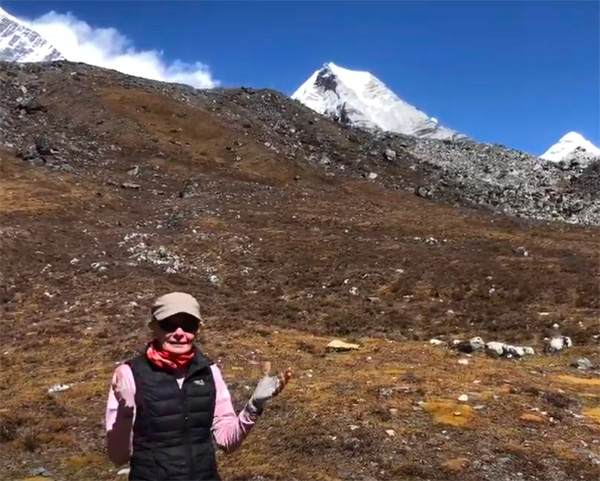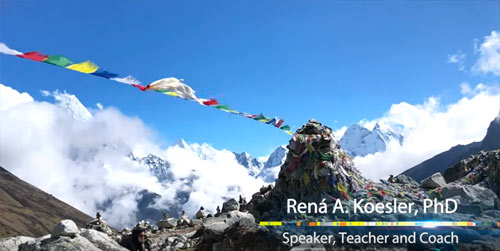Although this video length is just shy of 3 minutes, the story begins in 1998. I was on my first sabbatical from Longwood University and I chose to travel to Nepal to conduct research about the environmental degradation of the most popular trekking routes in Nepal (Khumbu and Mt. Everest Base Camp and the Annapurna Circuit). I was given the name of a trekking guide from a friend and followed through with communicating with him via email and Fax.
I arrived in Nepal in early March and spent a few days touring around Kathmandu. Next, I flew on a Russian helicopter to Lukla, the village that is considered the gateway along the Everest route. March was a bit early for spring trekking and the weather still produced snow at Namche Bazaar. It continued to get colder the higher in altitude we went. Heavy blankets seemed to work as doors but when the wind blew, the blankets no longer served its insulated purpose as they would flap in the wind, freeing the cold air to swirl around inside the tea houses.
I finally got a view of Mt. Everest from Namche at around 12,000 ft. To see the highest mountain in the world was breathtaking and I had to pinch myself to ensure this was reality. Climbing Mt. Kalapathar at 18,500 ft. was the most spectacular view of Mt. Everest and the Kumbu icefall. Imagining climbers having to navigate their way through these fissures in the ice was beyond comprehension.
But, it was on the way back to Lukla along a different route where my guide pointed out Island Peak. He said many people climb it and I could too. That conversation stuck with me for 21 years. I had returned to Nepal 3 other times to take students groups and thought about and saw Island Peak every time! I didn’t have the opportunity when I was with other groups so I put the idea off throughout those years.
I nearly abandoned the thought of going to climb it until I retired from my job as a professor. I realized that I now had the flexibility of time and I knew I wasn’t getting any younger. Once deciding I was going to return and climb the peak, I began my mental and physical preparation.
On October 15, 2019 I summited Island Peak. It was indeed the toughest climb I had ever experienced. The extreme gain in altitude in one day at altitudes above 18,000 ft along with the technical nature of the climb presented the breeding ground for relying on my will and faith to reach the summit.
Having pinned over this mountain for over 20 years was my testament to not live with the notion of “I shoulda, coulda or woulda.” I was pleased to have followed through. The challenge of it made it much more worth the planning, preparation, and significance of reaching the summit.



Comments